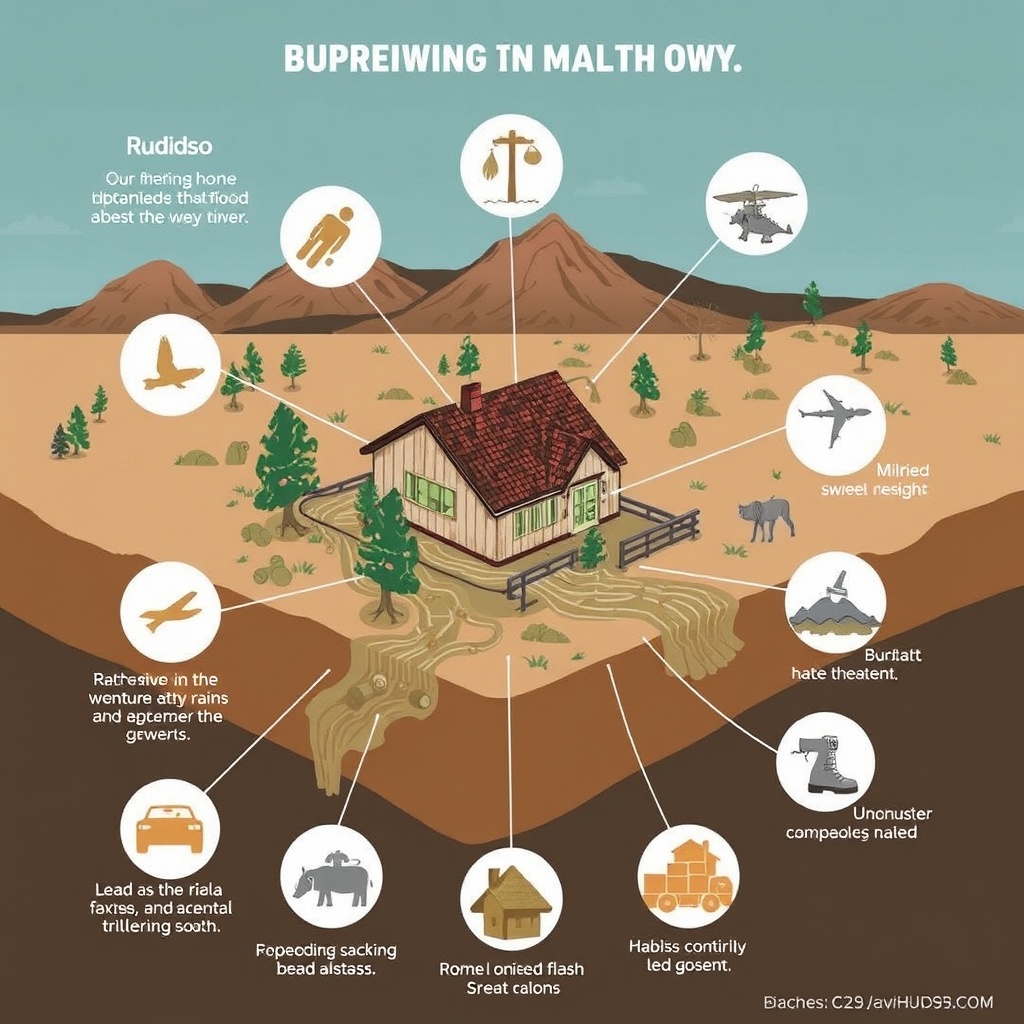Introduction
Flash flooding is a deadly and destructive force of nature that can strike with little warning, causing catastrophic damage to communities and infrastructure. Recently, the state of New Mexico has been hit hard by severe flooding, with multiple water rescues underway and homes swept away. The situation has been declared a flash flood emergency, with the National Weather Service issuing warnings and advisories to affected areas. In this article, we will delve into the details of the flooding in New Mexico, exploring the causes, consequences, and response efforts.
Causes and Consequences of Flash Flooding
Flash flooding occurs when heavy rainfall falls on a specific area in a short amount of time, causing water to rise rapidly and overflow into surrounding areas. This can happen in any region, but areas with steep terrain, urbanization, and poor drainage are particularly vulnerable. In the case of New Mexico, the flooding was triggered by intense thunderstorms that dumped heavy rainfall on the state's south. The resulting flash flooding trapped multiple people, prompting water rescues and evacuations.
The consequences of flash flooding can be devastating. In addition to the immediate risk to human life, flooding can cause widespread damage to homes, businesses, and infrastructure. In New Mexico, homes were swept away by the powerful floodwaters, leaving families without shelter or essential belongings. The economic impact of flooding can also be significant, with costs running into millions of dollars. According to the National Flood Insurance Program, the average cost of a flood claim is around $43,000.
Response Efforts and Emergency Declarations
In response to the flooding, emergency declarations were made, and rescue efforts were swiftly underway. The National Weather Service issued flash flood warnings and advisories, alerting residents to the danger and providing critical information on the location and severity of the flooding. Local authorities, including law enforcement and emergency management officials, worked to evacuate people from affected areas and provide support to those in need.
Water rescues were a key component of the response efforts, with trained personnel using specialized equipment to reach stranded individuals and bring them to safety. In some cases, rescuers had to navigate treacherous terrain and fast-moving water to reach those in need, highlighting the risks and challenges involved in flood response efforts.
The declaration of a flash flood emergency is a critical step in responding to flooding, as it allows for the rapid deployment of resources and personnel to affected areas. In New Mexico, the emergency declaration enabled authorities to mobilize resources, including personnel, equipment, and supplies, to support the response efforts.
Case Studies and Examples
The flooding in New Mexico is not an isolated incident. Flash flooding is a recurring problem in many parts of the United States, with devastating consequences for communities and individuals. One notable example is the 2010 Tennessee flooding, which caused widespread damage and resulted in 21 deaths. The flooding was triggered by heavy rainfall, with some areas receiving over 19 inches of rain in a 48-hour period.
Another example is the 2013 Colorado Front Range flood, which caused significant damage and resulted in eight deaths. The flooding was triggered by a low-pressure system that stalled over the region, producing heavy rainfall and flash flooding. In both cases, the flooding highlighted the importance of preparedness, emergency planning, and swift response efforts in minimizing the impact of flooding.
In terms of response efforts, the 2018 Hurricane Florence flooding in North Carolina is a notable example. The flooding was triggered by heavy rainfall from the hurricane, with some areas receiving over 30 inches of rain. The response efforts involved a multi-agency approach, with local, state, and federal authorities working together to evacuate people, provide support, and repair damaged infrastructure.
Mitigation and Prevention Strategies
While flash flooding is a natural disaster that cannot be entirely prevented, there are steps that can be taken to mitigate its impact. One key strategy is to improve flood forecasting and warning systems, enabling authorities to provide timely and accurate information to affected communities. This can involve investing in advanced weather monitoring systems, improving data analysis and modeling, and enhancing communication networks.
Another strategy is to implement flood-control measures, such as levees, dams, and floodwalls. These structures can help to protect communities from flooding by controlling the flow of water and preventing it from overflowing into surrounding areas. Additionally, wetland restoration and conservation efforts can help to reduce the risk of flooding by allowing natural areas to absorb and filter excess water.
In urban areas, strategies such as green infrastructure, flood-resistant construction, and smart drainage systems can help to mitigate the impact of flooding. Green infrastructure, such as parks and green roofs, can help to absorb excess water, while flood-resistant construction can reduce the risk of damage to buildings and homes. Smart drainage systems, which use advanced technologies to manage stormwater runoff, can also help to reduce the risk of flooding.
Conclusion
The flash flooding in New Mexico is a sobering reminder of the power and destructiveness of nature. The consequences of flooding can be devastating, with widespread damage to homes, businesses, and infrastructure. However, by learning from past incidents, investing in mitigation and prevention strategies, and improving response efforts, we can reduce the impact of flooding and save lives.
As we look to the future, it is essential that we prioritize flood risk reduction and management, recognizing the critical role that emergency preparedness and response play in minimizing the impact of flooding. By working together, we can build more resilient communities, protect lives and property, and create a safer and more sustainable future for all. With the increasing frequency and severity of extreme weather events, it is more important than ever that we take proactive steps to mitigate and prevent flooding, and respond swiftly and effectively when disasters strike.


Leave a comment